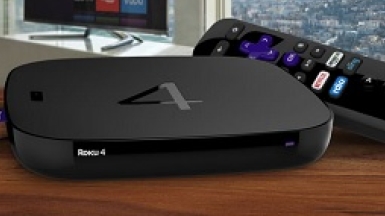
With Apple and Roku both announcing their fourth-generation streaming boxes, fans will have a hard time selecting what set-top device would be of great use to them.
Fans/audience usage
In terms of specs, the Roku system is more in line with the needs of casual online streamers. It can support both Android and iOS and also has its own special 4 UHD category in its Channel Store that lets viewers select 4K-only channels.
The Apple TV, meanwhile, is more suited to true-blue Apple hardcore users. As the Cupertino-based company made the Apple TV the central hub for its home system, fans who are always online and into Apple HomeKit-supported gadgets will find that the set-top box will optimize their devices and maximize their use.

General specs
In terms of design, the new Apple TV has a smaller footprint than the Roku 4. The new set-top box from Apple only measures 3.9 x 3.9 x 1.4 inches, against Roku's 6.5 x 6.5 x 0.8 inches for its 4K streamer. The difference may not be significant, but in terms of space, Apple TV will only take up 15.21 square inches of a user's living room, whereas Roku 4 will take up three times as much.
Although Apple TV may seem more portable than the Roku 4, the new player makes up for it by providing a far better resolution than that of the Apple's box. Apple's display resolution maxes out at full 1080p, while the new Roku 4 can stream 4K content for up to 3840 x 2160 resolution.
Non-TV content
Part of the new Apple TV's features is that as a HomeKit hub, users can easily incorporate their smart appliances and devices into the home network, making remote viewing and user control more convenient. Meanwhile, the new Siri remote also incorporates a touch screen, gyro, and accelerometer that could improve experience in playing mobile games.
The Roku 4, meanwhile, has a selection of games that might be subpar when checked against other console-specific platforms, but its over-all support for both Android and iOS, along with its cross-platform functions, make up for this.













